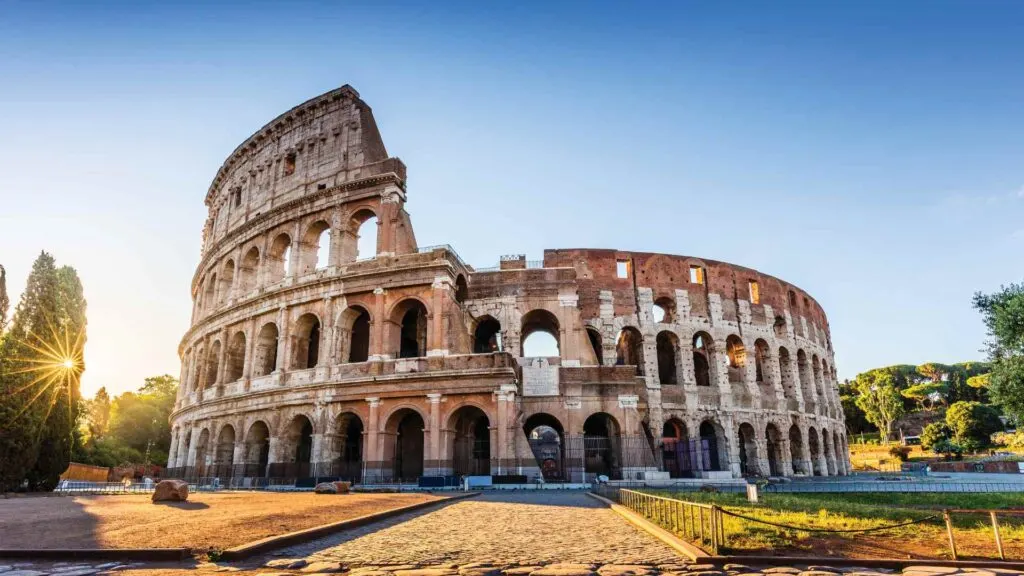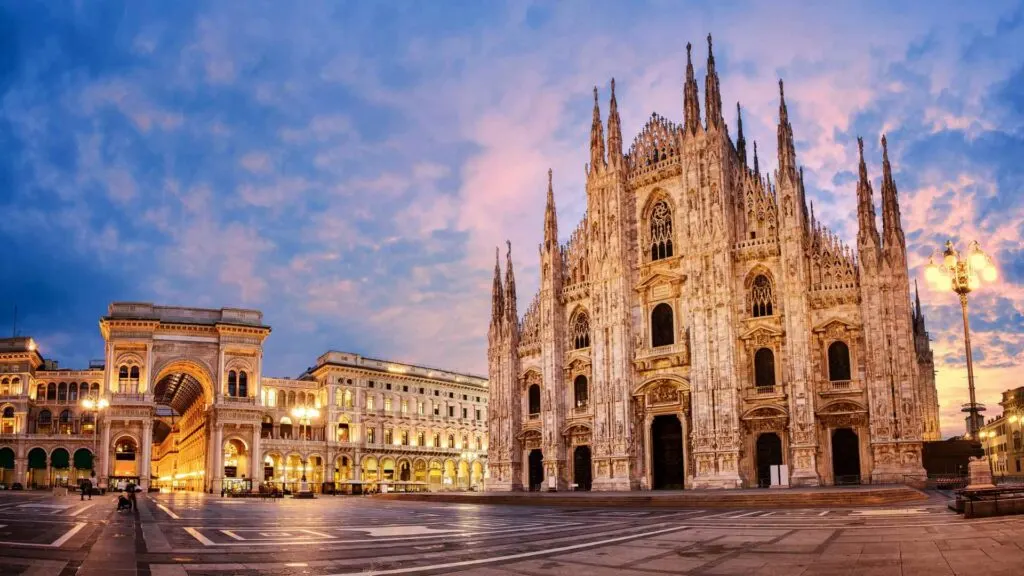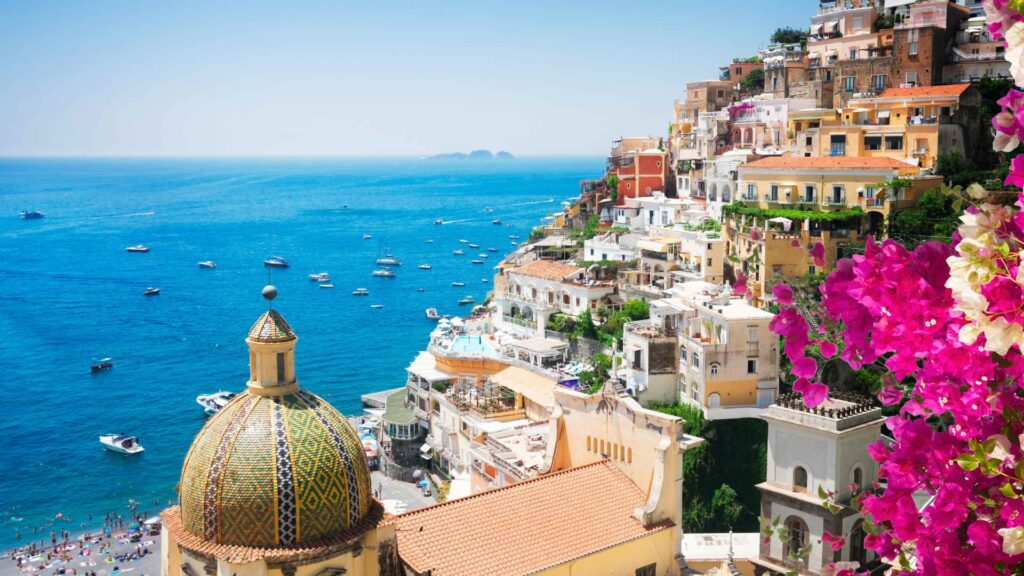Italy, known for its rich culture, timeless art, and delicious cuisine, is a country filled with fascinating secrets.
Whether you’re a history buff, a foodie, or a travel lover, these 145 fun facts about Italy will make you see it in a whole new light. Let’s dive in!
Italy’s Ancient Wonders and Architecture
- Italy is home to more UNESCO World Heritage sites than any other country, with over 55 remarkable historical locations.
- Rome’s Colosseum, one of the New Seven Wonders of the World, could hold 50,000 spectators in its prime.
- The Leaning Tower of Pisa wasn’t designed to lean; the tilt resulted from an unstable foundation.
- Pompeii, buried by a volcanic eruption in 79 AD, is an extraordinary preserved snapshot of ancient Roman life.
- Rome’s Pantheon has the world’s largest unreinforced concrete dome, a marvel of engineering.
- Florence’s Cathedral of Santa Maria del Fiore features a dome designed by Filippo Brunelleschi, which was groundbreaking in its time.
- Italy is credited with establishing the first paved roads, connecting a vast empire.
- Venice is famous for its canals, with about 150 of them winding through the city.
- The Roman Forum in Rome was the hub of ancient Roman life, filled with temples, markets, and gathering spaces.
- Mount Vesuvius, near Naples, is the only active volcano on mainland Europe.
- Ostia Antica, an ancient port city near Rome, offers a well-preserved glimpse into life over 2,000 years ago.
- Rome’s Castel Sant’Angelo was originally built as a mausoleum for Emperor Hadrian.
- Verona, known as the city of Romeo and Juliet, has a beautiful Roman amphitheater still used for concerts today.
- The Vatican City, located in Rome, is the smallest independent country in the world.
- Milan’s iconic Duomo Cathedral took nearly six centuries to complete and is one of the largest in the world.

Italian Cuisine and Culinary Traditions
- Italy has more than 400 types of cheese, from Parmigiano Reggiano to Gorgonzola.
- Pizza was invented in Naples, with the Margherita created to honor Queen Margherita with its red, white, and green colors.
- Italians introduced coffee to Europe, popularizing espresso and cappuccino.
- Balsamic vinegar originates from Modena and is aged in wooden barrels for a rich, complex flavor.
- Italian gelato is denser and creamier than most ice creams, traditionally made with fresh ingredients.
- The concept of “al dente” pasta originated in Italy, meaning “to the tooth” texture.
- Italians are strict about food combinations—no cappuccinos after breakfast!
- Risotto, a creamy rice dish, is a specialty of Northern Italy, especially around Milan.
- Italy’s truffle hunting is a cherished tradition, with white truffles being highly prized.
- Chianti, one of Italy’s most famous wines, comes from the Tuscany region.
- Olive oil from Italy is among the highest quality, especially from regions like Puglia and Tuscany.
- Prosciutto di Parma, a type of cured ham, is a delicacy aged for at least 12 months.
- In Italy, pasta is generally served as a first course, not a main.
- Sicilian cannoli, a popular dessert, consists of a crispy shell filled with sweet ricotta cream.
- Italy is known for its vineyards, making it one of the top wine-producing countries in the world.

Italian Art and Literature
- The Renaissance, a cultural rebirth, began in Italy in the 14th century.
- Leonardo da Vinci’s “Mona Lisa” is the most famous painting in the world, though it’s housed in the Louvre in Paris.
- Michelangelo’s statue of David, in Florence, is an iconic example of Renaissance sculpture.
- Dante Alighieri’s “Divine Comedy” shaped the Italian language and inspired generations.
- Italy is home to more works by famous artists like Botticelli, Caravaggio, and Raphael than any other country.
- Venice’s canals inspired the creation of many masterpieces in painting and literature.
- The Sistine Chapel ceiling, painted by Michelangelo, is one of the greatest masterpieces of Western art.
- Italy has produced several Nobel Prize winners in literature, including Luigi Pirandello.
- Naples is credited with creating the Pulcinella character, a classic in Italian theater.
- Italy’s opera tradition is world-renowned, with composers like Verdi and Puccini leading the way.
- The “Birth of Venus” by Botticelli is an iconic piece housed in Florence’s Uffizi Gallery.
- Venice’s Teatro La Fenice is one of the oldest and most famous opera houses.
- The “Last Supper” by Leonardo da Vinci can be seen in Milan’s Santa Maria delle Grazie.
- Italy’s art can be seen everywhere, from churches to public squares, with no museum ticket required.
- Rome’s art collections range from ancient frescoes to modern masterpieces, with works from every era.
Italian Fashion and Design
- Italy is a global leader in fashion, with Milan recognized as one of the fashion capitals of the world.
- The iconic Italian brands include Gucci, Prada, and Dolce & Gabbana, renowned for their luxury and style.
- Venice’s Murano glass is famous for its unique color and intricate design, hand-blown for centuries.
- Italian shoemakers, such as Salvatore Ferragamo, are known for quality and innovation.
- Rome’s Via Condotti is a historic street known for luxury shopping and high-end fashion.
- Italy pioneered eyewear design, with high-quality brands like Ray-Ban and Persol.
- Italians take pride in their sartorial elegance, with custom-tailored suits being a common sight.
- Italy’s furniture and interior design are globally sought after, with brands like Poltrona Frau.
- Italian leather goods, from bags to belts, are famous worldwide for their craftsmanship.
- Milan Design Week is one of the biggest annual events in the interior design world.
- Fashion Week in Milan attracts designers, celebrities, and fans from around the globe.
- Italy’s approach to design emphasizes simplicity, elegance, and high-quality materials.
- The Vespa scooter, an Italian icon, became a symbol of Italian design and culture.
- Italian ceramics, especially from regions like Deruta, feature beautiful, hand-painted designs.
- Florence is a significant center for artisans specializing in leather goods and jewelry.

Italian Festivals and Cultural Traditions
- Italy’s Carnival, especially in Venice, is known for its elaborate masks and costumes.
- The Palio di Siena, a horse race in Siena, is held twice a year and dates back to the 13th century.
- Italy celebrates Ferragosto, a national holiday in August, with festivals, parades, and feasts.
- Epiphany is celebrated with La Befana, a witch who delivers gifts to children.
- Naples is famous for its nativity scenes, a cherished tradition during the Christmas season.
- Easter is a significant holiday, with processions and religious celebrations throughout Italy.
- Venice has a longstanding tradition of glassblowing, with workshops open to visitors.
- Italy’s olive oil festivals celebrate the harvest with tastings and events.
- Rome’s fountains are celebrated in the Festa della Madonna Fiumarola, blessing the Tiber River.
- Italy’s grape harvest festivals, like the one in Asti, celebrate wine and culture.
- Florence celebrates the “Scoppio del Carro,” or Explosion of the Cart, for Easter.
- Italy’s truffle festivals, especially in Alba, are popular among food lovers.
- Christmas markets in cities like Rome and Milan are festive and filled with handmade crafts.
- Rome’s Marathon is one of the most scenic races, passing historic landmarks.
- Milan’s La Scala hosts a New Year’s gala, one of the most prestigious in the world.
Bonus Fun Facts About Italy
- Italians invented the thermometer in the early 17th century.
- Venice was built on a series of small islands connected by bridges.
- The Vatican Library is one of the oldest in the world, founded in 1475.
- Galileo Galilei, the “father of modern science,” was born in Pisa.
- Italian is derived from Latin, the language of ancient Rome.
- Sicily is the largest island in the Mediterranean Sea.
- Rome has a 2,000-year-old sewage system still in use today.
- Italian opera was born in Florence in the late 16th century.
- Italian is one of the most studied languages worldwide.
- Florence was the first city to have paved streets.
- Italy has some of the world’s oldest universities, including Bologna, founded in 1088.
- Italy’s national dish, pasta, has been enjoyed since ancient times.
- Lake Garda is Italy’s largest lake, located in the north.
- The Rialto Bridge in Venice is the oldest bridge over the Grand Canal.
- Italy’s national animal is the Italian wolf.
- The first public library in Europe was established in Florence.
- The Po River is Italy’s longest river, running over 400 miles.
- Italians invented eyeglasses in the 13th century.
- The Italian Alps are a popular skiing destination.
- The first European café opened in Venice in 1683.
- Italians enjoy a slow-paced lifestyle known as “dolce far niente” or “the sweetness of doing nothing.”
- Italy has a fountain dedicated to wine in Caldari di Ortona.
- Pisa’s leaning tower leans about 4 degrees off center.
- “Arrivederci” means “until we meet again.”
- Naples has the oldest opera house in the world.
- Italians use hand gestures as a big part of communication.
- Italy has no less than 1,500 lakes.
- Espresso is regulated by the Italian government.
- The Italian flag colors represent faith (green), hope (white), and charity (red).
- Italians are passionate soccer fans, with Serie A being one of the most competitive leagues.
- Milan’s canals were co-designed by Leonardo da Vinci.
- Italy is the only country with two completely independent countries within its borders.
- “Ciao” originated in Venice.
- The Italian rail network is the fifth largest in the world.
- Florence was once the capital of Italy.
- Sicily’s Mount Etna is one of the world’s most active volcanoes.
- Venice sinks about 1-2 millimeters every year.
- Italy produces 25% of the world’s tomatoes.
- Italians consume the most pasta per capita worldwide.
- The Trevi Fountain collects over €3,000 in coins daily.
- Italy has more than 100 dialects.
- Florence’s Ponte Vecchio is famous for its jewelry shops.
- Italy is home to over 200 species of truffles.
- Italians spend over €100 per person annually on ice cream.
- Italians introduced the piano in the 1700s.
- Venice has no roadways, only canals.
- “Florence Syndrome” is a term for being overwhelmed by beauty.
- Milan is known for its luxury fashion and design schools.
- Italians rank coffee among their top national treasures.
- Italy was home to the world’s first botanical garden in Padua.
